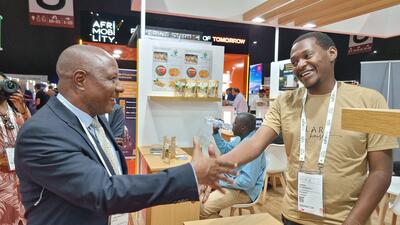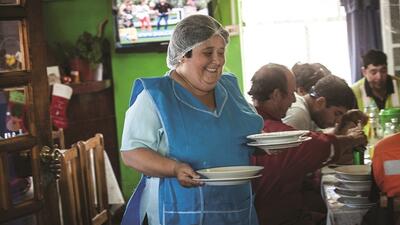A woman's world adding export education to economic aim
Policymakers that understood the small business environment in the United States, including the unique challenges and barriers facing women, were hard to find. No one reached out to small businesses for their perspective on how to craft legislation that spurred growth. No one recognized women business owners as an economic force. Most importantly, no business organization with a professional team in Washington existed to represent us. We needed a team that would build relationships, educate lawmakers and advocate for our priority issues. The challenge was twofold: even if we could establish a Washington presence, how could we unite women across the United States to understand the importance of advocacy and working together?
In 2000, I co-founded Women Impacting Public Policy (WIPP) to fill that void. Today, WIPP is a non-partisan advocacy organization representing 67 associations and has a membership of more than one million business owners. According to the Center for Women’s Business Research, women-owned firms have an economic impact of US$ 3 trillion annually and this translates into more than 23 million jobs. These jobs, an incredible 16% of the workforce in the United States, not only sustain individual workers, but also contribute to the financial security of families, the commercial vitality of communities and the economic recovery of the nation. With these numbers as a backdrop, lawmakers know they must pay attention to the economic advantages women-owned companies bring to the country.
At WIPP, our mission is twofold: to advocate for women’s economic issues and, at the same time, educate women business owners on how to create, develop, implement, sustain and grow a successful company. The organization has created an online education system providing webinars, fostering online discussion and creating curricula to bring information, tools and resources to members. Technology has leveled the playing field and our system provides women business owners and their teams with access to peer mentors around the clock. WIPP hosts dozens of webinars, calls and online forums every month, giving small businesses an opportunity to share their successes and learn from experts. As we all know, women are open to asking for help and willing to share their expertise. This education and collaboration has created an informed membership focused on growing companies and being a visible advocate for the public and private sector programmes that spur economic growth.
One example is WIPP’s Give Me 5 campaign, introduced in 2008. It has trained over 600,000 women entrepreneurs to compete for United States federal contracts. Members are introduced to the opportunities federal contracting can provide and learn how to approach, communicate with and sell to the largest customer in the world, the United States Government. Part of the education is to understand and advocate for policies that enhance or have an impact on company processes. Building on Give Me 5’s success, WIPP has introduced four educational programmes covering technology, energy, the environment and access to capital.
Most recently, WIPP introduced ExportNOW, a programme designed to educate members and the broader women-in-business community about the vast potential for enterprise that exists beyond the borders of the United States. There are compelling reasons why women-owned businesses need to consider export as a growth strategy:
- 98% of all United States exporters are classified as small- to medium-sized businesses (United States Department of Commerce);
- 20% of manufacturing jobs in the United States rely on exports (United States Small Business Administration);
- Nearly 96% of consumers and over 60% of the world’s purchasing power reside outside the United States (United States Small Business Administration);
- 60% of small businesses that engage in exporting derive 20% of their annual earnings from exporting (International Trade Administration).
The 2007 United States census reported that women exports represent a US$ 15 billion industry with three times the revenue per employee and a lower likelihood of going out of business than all small businesses. Becoming export ready is an excellent opportunity; as the United States marketplace becomes more competitive than ever, it is crucial for women-owned businesses to have full economic participation. ExportNOW will aid current exporters in efforts to expand to other countries and guide interested women-owned businesses that are new to exporting through the development and execution of an export strategy. The Obama Administration has made doubling exports by 2014 a priority, and women-owned businesses have a vital role to play.













